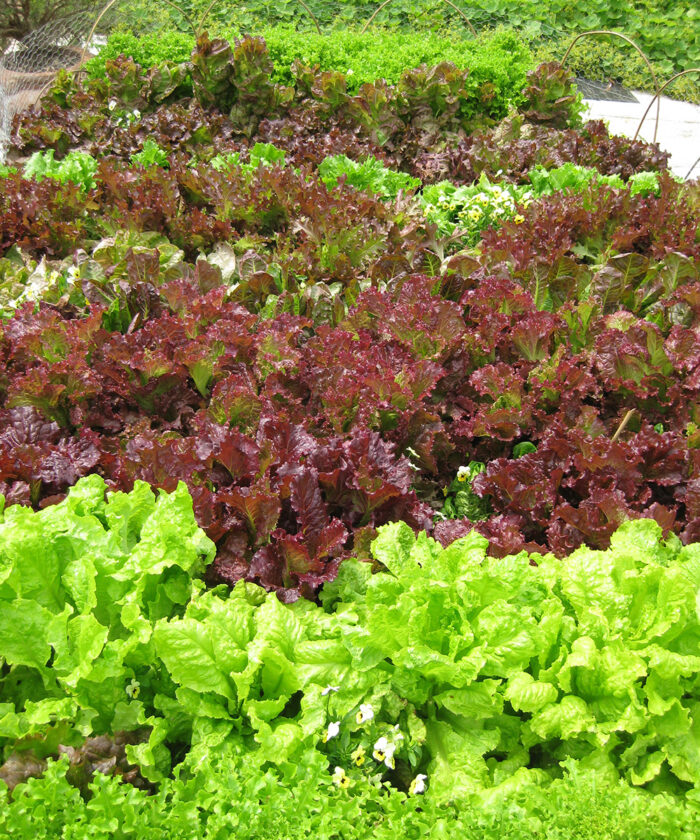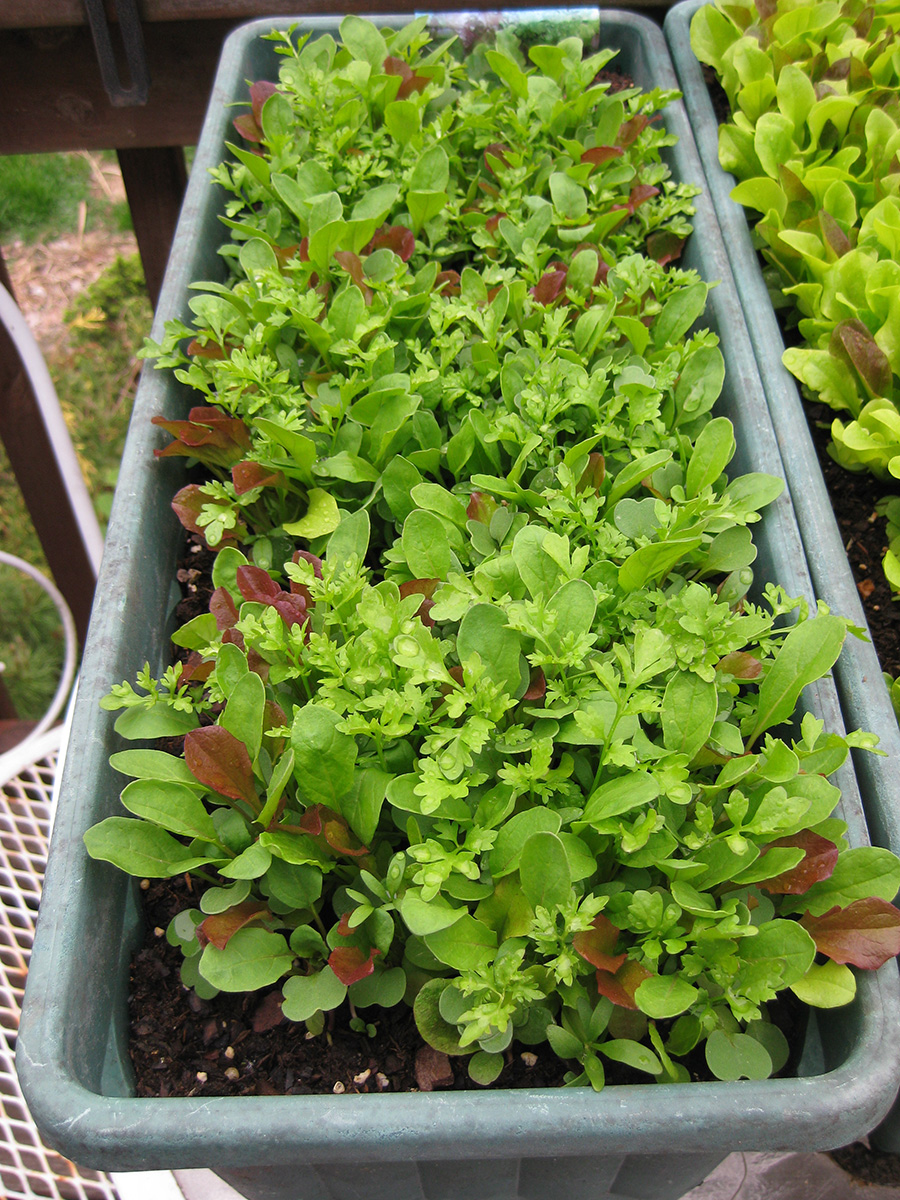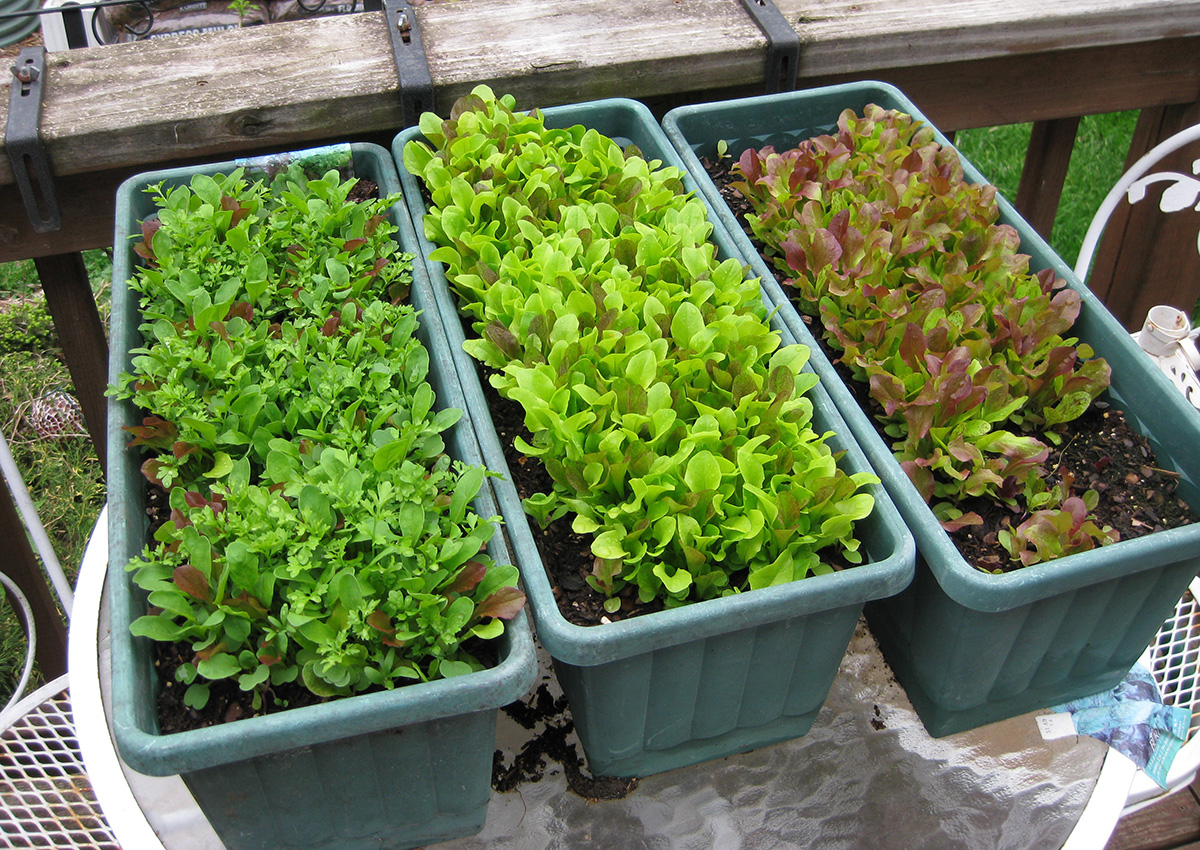Growing Lettuce Through Spring, Summer, and Fall in the Midwest
Enjoy your favorite lush greens all season long with modified maintenance and sowing strategies

While early spring is the perfect time to sow seeds of cool-season greens, particularly the wide array of tasty lettuce selections available, there are some methods you can use to keep your salad greens growing strong throughout the summer and well into fall. Consider the value and convenience of having fresh, easy-to-grow salad greens right out in the garden almost all year long!
Growing lettuce in cool-season weather
There are so many amazing varieties of lettuce available as seed from a wide range of local and mail-order sources. If you get an early jump on your seed sowing for lettuce, you’ll be eating salad before you’re even considering planting your tomatoes. Careful planning will allow for continued sowing success throughout the season.
When the soil temperature warms to 40° to 45°F in spring, the first wave of seeds can be sown directly in garden beds or containers with ¼-inch of loose soil brushed over the top of the seeds. Purchase an inexpensive soil thermometer to confirm soil temperature prior to sowing seeds. The timing of this first sowing can be as early as 3 to 5 weeks prior to the last frost date in your location. As a cool-season crop, the lettuces will shrug off cool days and cold nights, although a floating row cover is warranted if temperatures will be dipping toward the freezing mark. While the focus of this article is on growing lettuce, other early greens to explore that take a similar treatment include spinach, collards, mustard greens, Swiss chard, and kale.

Lettuce seeds sown early in the season will show germination within 6 to 10 days, with early, tender greens ready for cutting in 30 days or less. The greens can be left longer and snipped at a larger stage as well. Seedlings can be thinned, shared, or transplanted as needed. Leave congested seedlings to maximize their availability as young greens if that is the goal. However, plants destined to get larger should be thinned or transplanted to be 6 to 18 inches apart, depending on the variety. Keep sowing waves of lettuce seeds every 7 to 10 days to have a constant rotation of fresh greens.
Heavy sowing of lettuce is warranted if you want to cut the lettuce when it’s immature to enjoy the taste of “baby” greens. If you want to leave your crop growing longer to get larger, the cut-and-come-again mixes are excellent for repeat production. You can also snip the outer leaves, leaving the center to continue to send out new growth, although a fully cut lettuce plant will also generate new growth.

Growing lettuce in warm-season weather
The key to successfully transitioning this process of successive seed sowing into the hotter summer months is based on two factors: shade and moisture. Lettuce is a highly water-retaining plant; it will desiccate quickly in full sun in summer. While lettuce prefers 6 to 8 hours or more of sun daily in spring or fall, it will need partial shade (3 to 4 hours of sunlight) once the weather warms up.
The shallow rooting of lettuce also necessitates frequent watering to maintain the crop. Summer sowing of lettuce seed should be done on already damp soil. Focus specifically on the loose-leaf selections that are listed as cut-and-come-again varieties. There are also some specific varieties that have more heat tolerance and adaptability in the summer months; seed companies will usually indicate this on their websites. Keep your summer-sown lettuces cropped short, and cut the outer leaves when they reach 4 to 6 inches in height. As later summer arrives, your lettuce-sowing approach can begin to mimic what you did earlier in the spring, as the lighting and soil temperatures will be very similar.

Find the perfect spot
Examine your landscape for available space in garden beds and containers for a cool-season spot to sow lettuce and other early greens. With your summer lettuces needing some shade, focus on existing shady areas of beds, containers, and even opportunities within the shade of existing, taller plants.
If you’re growing lettuce for the first time, you’ll be amazed not only by the wide range of selections out there but also by the astounding range of flavors. Use the above strategies to keep the show going. and you can grow lettuce from April through October in the Midwest.
—Mark Dwyer, former director of horticulture at Rotary Botanical Gardens in Janesville, Wisconsin, operates Landscape Prescriptions by MD.
Fine Gardening Recommended Products

Razor-Back Potato/Refuse Hook
Fine Gardening receives a commission for items purchased through links on this site, including Amazon Associates and other affiliate advertising programs.

Gilmore Rubber Hose Washer 10pk
Fine Gardening receives a commission for items purchased through links on this site, including Amazon Associates and other affiliate advertising programs.
- Clip of 10

Lee Valley Large Gardener's Wash Basket
Fine Gardening receives a commission for items purchased through links on this site, including Amazon Associates and other affiliate advertising programs.







Comments
Log in or create an account to post a comment.
Sign up Log in